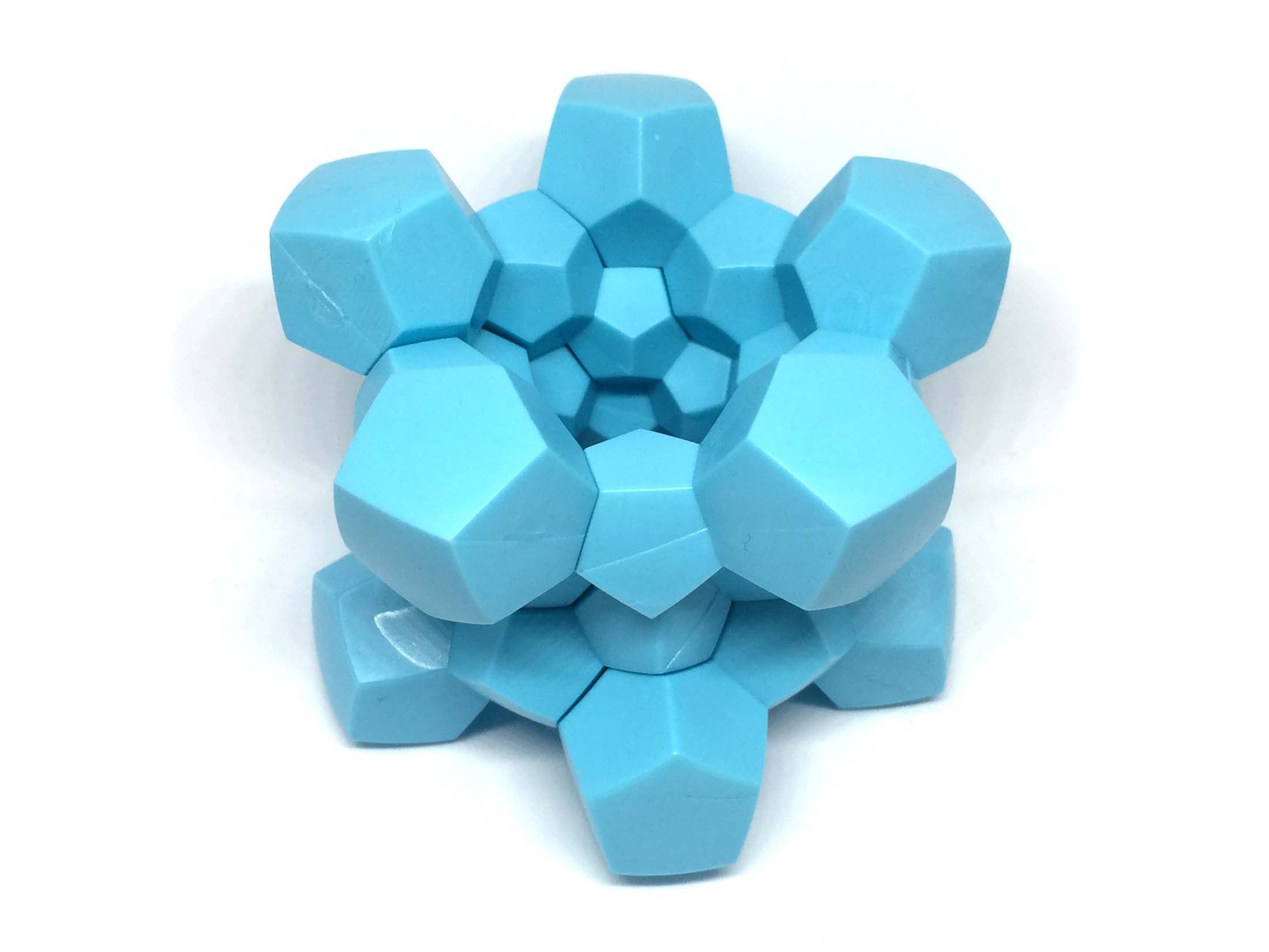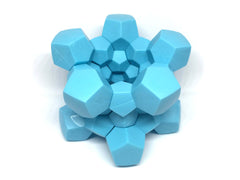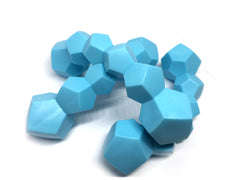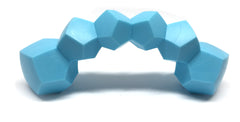



Twelve regular 2D pentagons join together nicely in 3D to make a dodecahedron. 120 of those dodecahedrons unite in 4D space to form the glorious hyper-dodecahedron! 4D manufacturing is very expensive though, so we've made Dodecaplex.
Dodecaplex is a physical puzzle made of 6 sections of a 3D rendering of the hyper-dodecahedron - projected down into 3D, and split apart into pieces. Your job is to put it back together, and there are several different solutions you can combine 5 or 6 of the pieces into. Our injection-moulded plastic pieces snap into place in an immensely satisfying way, providing hours of higher-dimensional fun!
Dodecaplex is based on the mathematics of Saul Schleimer and Henry Segerman. Here's a paper they wrote explaining the maths behind it (PDF), and a longer, more detailed version on the ArXiV. Dodecaplex is based on the Quintessence Pulsar puzzle, and other versions in the same range are available to buy as 3D-printed objects on Shapeways.
Price = (the 196th prime number) pence = 1193 pence = £11.93
